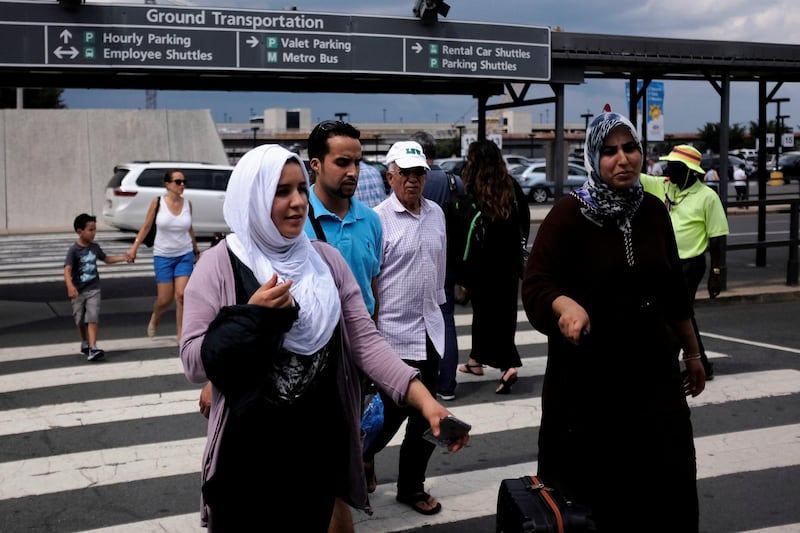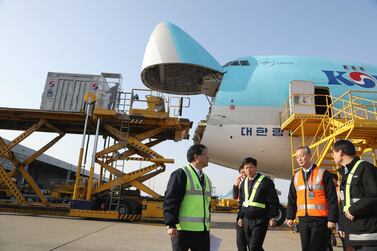Global air passenger traffic in May rose compared with the same month last year, according to the International Air Transport Association (Iata).
Demand (measured in revenue passenger kilometres, or RPKs) increased 4.5 per cent compared to May 2018, in line with the revised April traffic growth of 4.4 per cent and above the recent trough of 3.1 pre cent year-on-year growth recorded in March, the agency said.
However, it remains below the 20-year average growth rate of around 5.5 per cent. Capacity (available seat kilometers or ASKs) climbed by a modest 2.7 pre cent and load factor rose 1.4 percentage points to 81.5 per ent, surpassing last year’s record load factor of 80.1 per cent.
“Passenger demand growth has slowed compared to the past two years. This is in line with slumping global trade, rising trade tensions and weakening business confidence. In this challenging environment, airlines are managing capacity carefully in order to optimize efficiency,” said Alexandre de Juniac, Iata’s director general and CEO.
Middle East carriers’ May demand growth decelerated to 0.8 per cent compared to a year ago, from 3.3 per cent annual growth recorded in April. This partly reflects the impact of the structural changes that are underway in the industry in the region, Iata said. May capacity slipped 6.1 per cent, while load factor rose 5 percentage points to 73 per cent.
International traffic demand rose 4.3 per cent in May over the year-ago period, which was down from 5.1 per cent growth in April. All regions recorded growth, led by airlines in Latin America. Total capacity climbed 2.1 per cent, with load factor jumping 1.7 percentage points to 80.4 per cent.
European carriers’ May demand climbed 5.4 per cent over May 2018, a deterioration from the 7.7 per cent year-over-year growth recorded in April. Capacity rose 4.6 per cent and load factor was up 0.7 percentage point to 84.2 per cent, which was the highest among regions. Most of the region’s growth, however, occurred in the first half of 2018, with demand moving broadly sideways since then.
Asia-Pacific airlines saw their traffic rise 4 per cent in May compared to the year-ago period, an improvement over the 2.9 per cent increase in April. Capacity increased 3 per cent, and load factor edged up 0.8 percentage point to 78.6 per cent. This is the second consecutive monthly increase in demand, but it still represents a soft outcome in a region that regularly saw double-digit growth rates over the past few years, according to Iata. The US-China trade tensions continue to weigh upon growth in the region.
North American airlines’ traffic rose 4.8 per cent in May compared to May 2018, a slowdown from 5.6 per cent annual growth in April. Capacity climbed 2.7 per cent and load factor strengthened 1.7 percentage points to 83.6 per cent. The comparatively strong US domestic economy, and US dollar is helping to offset any trade-related softening in international travel, Iata said.
Latin American airlines experienced a 6.7 per cent increase in traffic in May compared to the same month last year, which was well up from 5.1 per cent growth in April. Passenger demand is currently holding up well, despite a challenging economic backdrop in a number of countries. Capacity climbed 4 per cent and load factor jumped 2.1 percentage points to 84.0 per cent, second highest among the regions.
African airlines posted a 2.1 per cent traffic rise in May compared to the year-ago period, which was up from just 1.1 per cent growth in April. Capacity climbed 0.1 per cent and load factor increased 1.3 percentage points to 67 per cent. Traffic between Africa and Europe continues to expand strongly, but economic growth in South Africa – a key regional economy and air transport market– contracted sharply in the first quarter and this is adversely impacting air passenger demand, according to Iata.
Domestic traffic increased 4.8 per cent in May compared to May 2018, well above the 3 per cent year-over-year rise recorded in April. Russia was the only market to see double-digit demand growth. Domestic capacity rose 3.8 per cent and load factor climbed 0.8 percentage point to 83.4 per cent.







